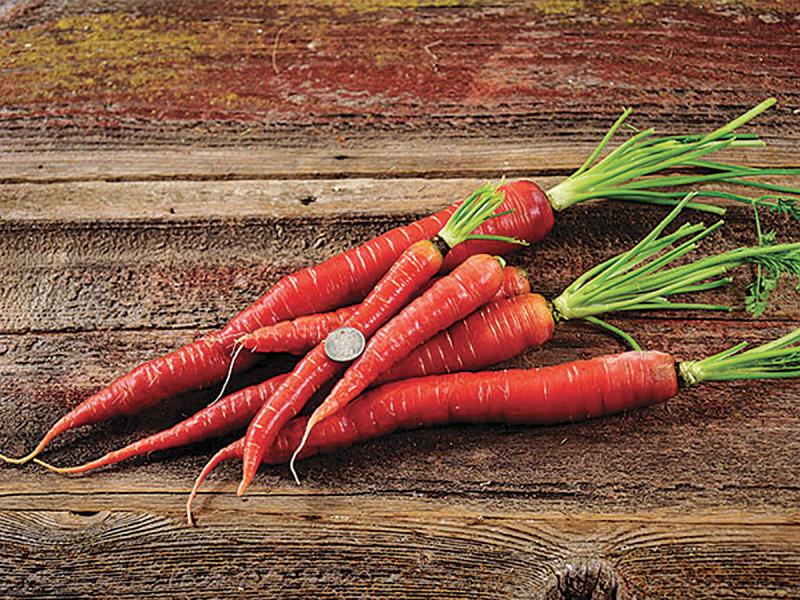While perfecting a new audio format known as a compact disc, makers planned on having an 11.5 cm diameter CD until someone argued that a single CD should at least have the capacity to record a complete performance of Beethoven’s Ninth Symphony, or 65 to 74 minutes, which requires a 12-cm diameter, now the standard size of a CD.
During Japanese New Year season you will hear traditional Japanese music as well as the very Germanic Beethoven's Ninth Symphony, This decidedly non-Japanese symphony owes its popularity to German prisoners of war held in Japan during World War I.
The traditional Japanese Tenpo calendar is a lunisolar calendar that shows both the moon phase and the time of the solar year. The dates of solar terms and lunar phases is the local time in Kyoto.
So it is fitting that during the Japanese New Year, one of the favorite foods is the brilliant scarlet Kyoto Red carrot, a Japanese traditional heirloom vegetable, or dento yasai.
Grown since at least 1712, Kyoto Red carrots have a delightful smooth texture along with a unique sweetness that tastes like caramels with a pleasant aftertaste. They are popular for juicing.
This kintoki-type carrot begins to show its deep red color when just three inches long. Fully grown, expect carrots to be up to a foot long.
All red carrots contain a natural pigment called lycopene, a form of carotene, associated with a reduced risk of macular degeneration.
Lycopene helps promote healthy skin, prevents heart disease as well as perhaps minimizing risk of prostate cancer. It also helps maintain healthy skin.
Notably, red carrots tend to grow darker colors when grown during cool seasons, so Kyoto Red carrot is often planted in midsummer or early fall. Carrots planted in spring might not be as dark as later-planted carrots.
Plant Kyoto Red carrots in light soil in full sun, in late summer or early fall. Dig the carrot bed deeply to loosen the soil for the long roots. Carrots will grow best in full sun or light shade in soil that is 5.8- 6.5 pH.
Sow Kyoto Red carrot seeds in late summer to fall directly in the garden. Space the seeds two to three inches apart in rows one to two feet apart.
The seeds are slow to sprout and may not germinate for 12 to 18 days. Keep the soil lightly moist so it does not form a hard crust. Delicate carrot seedlings have difficulty sprouting through tough, crusty soil. You can even cover the seeds with fine sand rather than soil.
To retain moisture, many gardeners cover the newly planted seeds by laying a board over the rows. Check daily and remove the board as soon as you see any sprouts. Once the carrots have sprouted, thin with scissors so you don't disturb the roots of the remaining seedlings. You can plant carrots in the same area as your tomatoes, which will lightly shade the carrots during hot days.
To discourage insect pests, such as carrot flies, plant them near garlic, leeks and onions, or the herbs sage and rosemary.
Kyoto Red carrot seeds are available from many sources, including Baker Creek (www.rareseeds.com), and Kitazawa Seeds (www.kitazawaseed.com).
Plan now to grow your own Kyoto Red carrots and then on New Year's Eve you can ring a bell 108 times to dispel the Bonno, or 108 types of unnecessary emotions, such as anger and discord of any kind, or even holding a grudge. All the while you can eat Kyoto Red carrots while listening to Beethoven's Ninth on a 12-cm CD.




















































